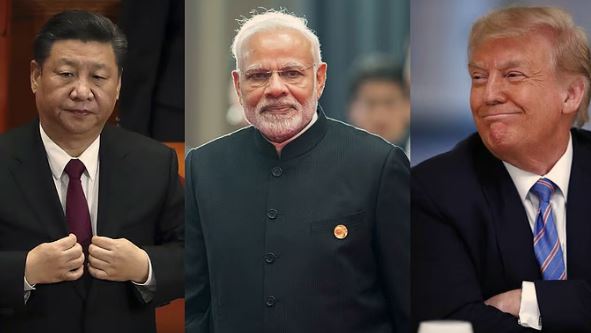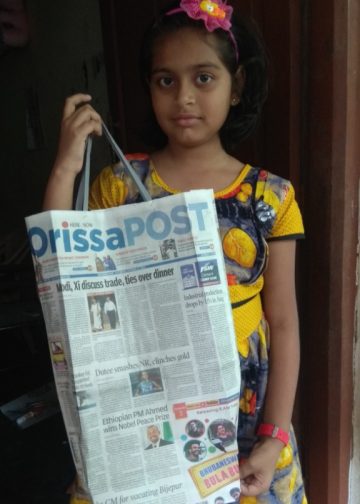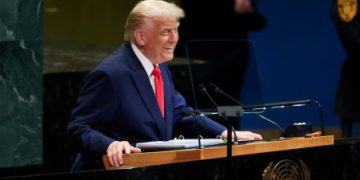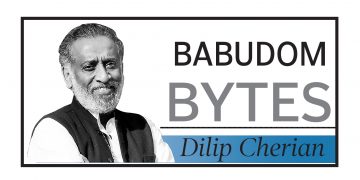Over the past two decades, India has focused on forging a strong alliance with the United States, aiming to secure its place as a counterweight to China in the region. This strategy has now hit a wall, thanks to the troubled personal ties of Prime Minister Modi with PoTUS Donald Trump.
New Delhi’s failure to secure a trade deal with an aggressive Trump administration has attracted sweeping tariffs of 50 per cent, including a 25 per cent duty as punishment for buying Russian oil, that are poised to severely impact India’s economy as the US remains the country’s largest exports market pegged at $86.5 billion. Add to this Trump’s insulting remarks on India’s “dead economy” and his aides’ persistent claims that New Delhi is financing Russia’s war machine in Ukraine have all contributed in damaging India. As matters stand, the feud seems to have reached a point of no return with recent reports indicating that Trump has even cancelled his proposed India visit scheduled for later this year.
This cold shouldering from America has prompted New Delhi to pivot its foreign policy, forcing it to re-engage with Beijing. The mounting pressure from the US and the broader West has forced India to pursue a diplomatic thaw with China despite five years of strained ties which started in Doklam followed by the deadly Galwan clash where the Chinese military clubbed and stoned 20 Indian soldiers to death in June 2020 at the peak of the COVID-19 pandemic.
Prime Minister Narendra Modi, who is on a visit to China after a gap of seven years, met Chinese President Xi Jinping on 31 August on the sidelines of the Shanghai Cooperation Organisation (SCO) Summit in Tianjin. The leaders agreed to work towards a “fair, reasonable and mutually acceptable” solution to the India-China border issue and pledged to expand bilateral trade and investment ties.
Before Modi’s visit, Chinese Foreign Minister Wang Yi made an official trip to India on 18-19 August. Prior to that, EAM S. Jaishankar and NSA Ajit Doval made discreet trips to Beijing. During these talks, both sides focused on restoring travel and trade connections, revising border protocols, and preparing for Modi’s visit to Tianjin.
China, for its part, is clearly out to exploit the India-US rift. That explains the tolerance Beijing has been demonstrating towards India while New Delhi’s ties with Washington are deteriorating. It is an unambiguous truth that China never was nor will ever be a friend to India.
With a trade gap that remains sharply in its favour, China is most likely to use India as a dump-yard for its low-cost goods. In fact, forging a closer trade partnership with China will present even greater challenges for India in terms of strengthening its domestic production capabilities.
With the US, India enjoyed a trade surplus of over $40 billion. That means America owed that money to India. That is precisely what Trump aims to address. In contrast, India faces a whopping trade deficit of nearly $100 billion with China. In other words, India owes that huge sum to China. With further growth in trade, this amount can only grow. This is bound to weaken India further as a global economic player of any consequence.
None can get swayed by government-fudged data on current GDP growth or the oft repeated lie that India has become the fourth largest economy of the world. It will take but a few months for all such claims to crumble and fall to shreds under the present circumstances.
Apart from trade, India’s push for reconciliation with China may be seen by many in the country as a bid to legitimise Beijing’s territorial aggression towards India in Ladakh and the Northeast. The Opposition Congress party has termed the normalising of ties with China despite the unresolved border dispute as the “government’s spinelessness.”
India’s foreign policy, of late, has been like a pendulum oscillating between two ends, all in the name of “strategic autonomy.” While New Delhi expects to be among the democratic world led by the United States, it also cozies up to Russia for energy and defence.
Russia’s 2022 invasion of Ukraine was a great opportunity for India to take a stand and do some course correction. But by refusing to take sides in the war, New Delhi exposed its policy ambiguity to the whole world. PM Modi talking to Ukrainian President Zelenskyy now is of little consequence.
India today finds itself at crossroads — on one side is China, a powerful aggressive inimical neighbour, while on the other end is an unrelenting America led by a President personally upset with our Prime Minister. The choice couldn’t be clearer. It can either keep drifting between major powers or shape a foreign policy grounded in internal strength.






































